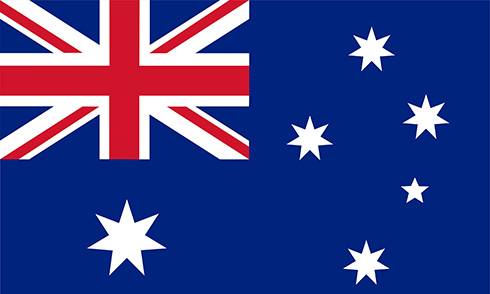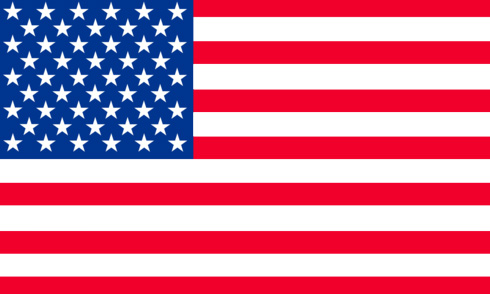Horsezone News
Feeding Mares in the Final Stages of Pregnancy
 |
| Looking for a proven broodmare? Then check out this lovely Quarter Horse mare, Eagleview Misty Glow, who is currently in foal and for sale on Horsezone. |
by Dr Nerida Richards - Equilize Horse Nutrition Pty Ltd
The last trimester of pregnancy in the horse sees the foetus increase in size by around 75%, with massive deposits of protein and minerals being made to put together the musculoskeletal structure of the soon to be born foal. While mares appear to be able to reproduce even under the harshest conditions, careful nutritional management of the late pregnant mare will give you the best chance of having strong, well grown foals that grow well in a structurally sound manner during the critical first year of their life. Managing mare bodyweight and her intake of quality protein and essential vitamins and minerals are all important pieces of the puzzling in producing healthy and sound foals.
Not too fat, not too thin
Managing a late pregnant mare’s body condition is important for a few reasons:
1. Thin mares or mares that are losing weight in late pregnancy may experience reproductive problems and have trouble going back in foal. They may also have reduced colostrum and milk production resulting in compromised passive immunity and slow growth in their foals.
2. Obese mares may give birth to foals with a higher than normal incidence of angular limb deformities (though the reason for this is not known) and can also have reduced milk production, again resulting in a slow growing foals.
Mares in their last trimester of pregnancy should be kept in a state of positive energy balance which allows them to gain weight without becoming fat. Ideally a late pregnant mare should be fed in order to reach a condition score of 6 to 7 (using the Henneke 1 to 9 scale). A score of 6 means the mare should have a good cover of fat with her ribs not visible but still be easily felt with firm pressure. This ‘rising plan of nutrition’ will help to ensure good fertility and milk production following the birth of the foal.
Mares that are already overweight when they reach the last trimester of pregnancy should be fed enough to maintain their current weight. Forcing them to lose weight in late pregnancy is unlikely to affect the birth weight of their foal, but it may reduce their chances of going back in foal and could impact on milk production.
Focus on protein
In the later stages of pregnancy the foetus of a 500 kg mare will assimilate around 8 kg of protein for the growth and development of its organs, bone and muscles. In order to allow normal development of the foetus, and to prevent the mare from drawing heavily on her own body reserves she needs a source of high quality protein in her diet. While the crude protein content of the diet should be monitored, particular attention must be paid to the concentration of essential amino acids in the diet, particularly lysine. Supplementary feeds for late pregnant mares and particularly those grazing poor quality pastures should use high quality proteins like soybean or canola meal as the protein base as they contain the best levels of essential amino acids. Low quality protein ingredients including cottonseed meal should be avoided for late pregnant mares.
Where poor quality grass based pastures and particularly subtropical pasture species like kikuyu form the bulk of a pregnant mare’s diet, lucerne or clover hay can be used to improve the overall protein quality of the forage in the diet.
Minerals, minerals, minerals
It is well known that correct supplementation of breeding and growing horses with macro and trace minerals plays a major role in reducing the incidence of developmental orthopaedic disease (DOD). It may however sometimes be underestimated how important mineral supplementation of the mare is in preventing DOD in her foal.
Research conducted in New Zealand has shown that mineral supplementation of the late pregnant mare is crucial for reducing DOD in foals. Pearce et al (1998) demonstrated that foals from mares that were supplemented with copper, zinc and selenium had a significantly lower incidence of articular cartilage lesions and a significantly lower physitis score at 150 days of age compared to foals from mares supplemented only with selenium and zinc. Interestingly, copper supplementation of the foals from mares that were not supplemented with copper during late pregnancy made no difference in reducing cartilage lesions or physitis scores, indicating that if your mares are incorrectly supplemented with copper during pregnancy, it is too late to do anything about it once the foal is born.
The supply of adequate amounts of calcium during late pregnancy is also important, with studies showing that calcium deficient pregnant mares can give birth to foals with thinner mid cannon circumference and mechanically weaker bones. Diets high in unfortified grains and low in forage, pastures with an inverted calcium to phosphorus ratio that contain more phosphorus than calcium (which is increasingly common, especially in the Hunter Valley area of NSW) and diets based on high-oxalate sub-tropical pasture species can all give rise to calcium deficiency in pregnant mares. It is also wise to pay attention to a pregnant mare’s phosphorus intake as some pastures can be too low in phosphorus to meet requirements making some form of supplementation necessary.
Mare’s milk is very low in trace minerals, so supplementation of the late pregnant mare with enough iron, zinc, copper and manganese is important to allow the foetus to store adequate amounts of these trace minerals in the liver. These liver stores are then used by to foal to meet its own requirements for these nutrients in the first few months of life. In selenium deficient areas, supplementation of the mare with selenium will help to prevent white muscle disease in the foal.
Care must also be taken not to overfeed minerals. While feeding any mineral in excess to the late pregnant mare should be avoided, higher than necessary levels of iodine present a particular risk to the unborn foal as iodine is concentrated across the placenta and also in milk. Foals born to mares fed dangerously high levels of iodine can be still born, or weak with no suckle response and severe leg deformities. High iodine supplements like kelp should be avoided in pregnant mares.
Is pasture enough?
Good quality pasture is quite capable of meeting a late pregnant mare’s energy, protein and vitamin requirements. However, pastures will nearly always be deficient in several minerals that are important for the sound development of the foal as shown in Table 1.
Table 1: Shows a 500 kg mare’s requirement for energy, protein, minerals and vitamins in her 11th month of pregnancy against the amount provided by a good quality temperate grass pasture (FeedXL.com).
|
|
Amount required |
Amount provided by pasture only |
% of required daily intake |
|
Energy |
90 MJ |
82MJ |
92% |
|
Protein |
892 g |
1206 g |
135% |
|
Calcium |
48 g |
34 g |
70% |
|
Phosphorus |
32 g |
23 g |
70% |
|
Copper |
175 mg |
57 mg |
32% |
|
Zinc |
510 mg |
243 mg |
48% |
|
Selenium |
2.5 mg |
0.9 mg |
36% |
|
Iodine |
4 mg |
1 mg |
25% |
|
Vitamin A |
50 000 IU |
50 000 IU |
100% |
|
Vitamin E |
1000 IU |
900 IU |
90% |
Where good quality pasture is available and meeting the mare’s needs for energy, protein and vitamins, a mineral balancer pellet fed at 0.5 to 1 kg/day is all that is needed to ‘fill the mineral gaps’ in the diet without adding excess energy to the diet and causing the mare to become overweight.
When late pregnant mares are grazing average to poor quality pasture a ‘complete feed’ may be needed to cover her energy, protein, mineral and vitamin needs where they are not being met by the pasture. In situations where the full recommended amount of a complete feed is too much and will cause the mare to become overweight, a combination of a complete feed and a mineral balancer pellet may be used to ‘fill the gaps’ in the diet while controlling energy intake and body fatness.
Take Good Care of Your Pregnant Mares
How you feed your pregnant mare determines to a large extent how healthy and sound your foal will be. Managing body condition, providing good quality protein and meeting all of her requirements for minerals and vitamins will give you the best chance at a robust and structurally sound foal that will grow well throughout the first 12 months of its life.



Pryde’s EasiFeed have an extensive range of pasture balancer pellets to suits various types of pasture that are perfect for late pregnant mares. The Pryde’s 150, 200 and 250 Balancer Pellets require no mixing, are well accepted by mares and contain all your mares need to stay fertile and produce strong, healthy foals, year after year. The balancer pellets can also be combined with the Pryde’s BioMare Cubes when pasture conditions decline. The BioMare Cubes are a fully fortified complete feed that provide an excellent source of easy to digest energy and high quality protein, rich in the essential amino acid lysine.
For an assessment of your late pregnant mare diets or to discuss your needs, contact Pryde’s EasiFeed on 1300 732 267, go to the website www.prydes.com.au or request a free diet analysis by clicking: http://prydes.com.au/index.php?option=com_jforms&view=form&id=2&Itemid=60.
News Search
Categories
- General
- Event Results
- Stallionzone
- Sponsored Shows
- Clubs
- Health
- Feature Horses
- Competitions
- Five Minutes With Horsezone
- Young Riders
- Reviews
- Training and Clinics
- Postcards from the saddle
- 2014 Equitana by HORSE FIRST
- 2013 Equitana
- 2012 Equitana
- 2012 London
- 2011 Equitana
- 2011 Queensland Floods
- 2010 WEG

 InglisDigitalAUS
InglisDigitalAUS InglisDigitalUSA
InglisDigitalUSA
Comments
kileygaiter wrote: